Hexagon Geosystems Services QC250B Collision Avoidance System User Manual UserManual
Safemine Ltd Collision Avoidance System UserManual
UserManual

1
®
INSTALLATION AND MAINTENANCE
GUIDE
for
SAFEmine COLLISION AVOIDANCE
SYSTEMS
Firmware Version 2.61
SMTool version 2.0.7
July 31 , 2014
© 2009-2014 SAFEmine Ltd.
Switzerland
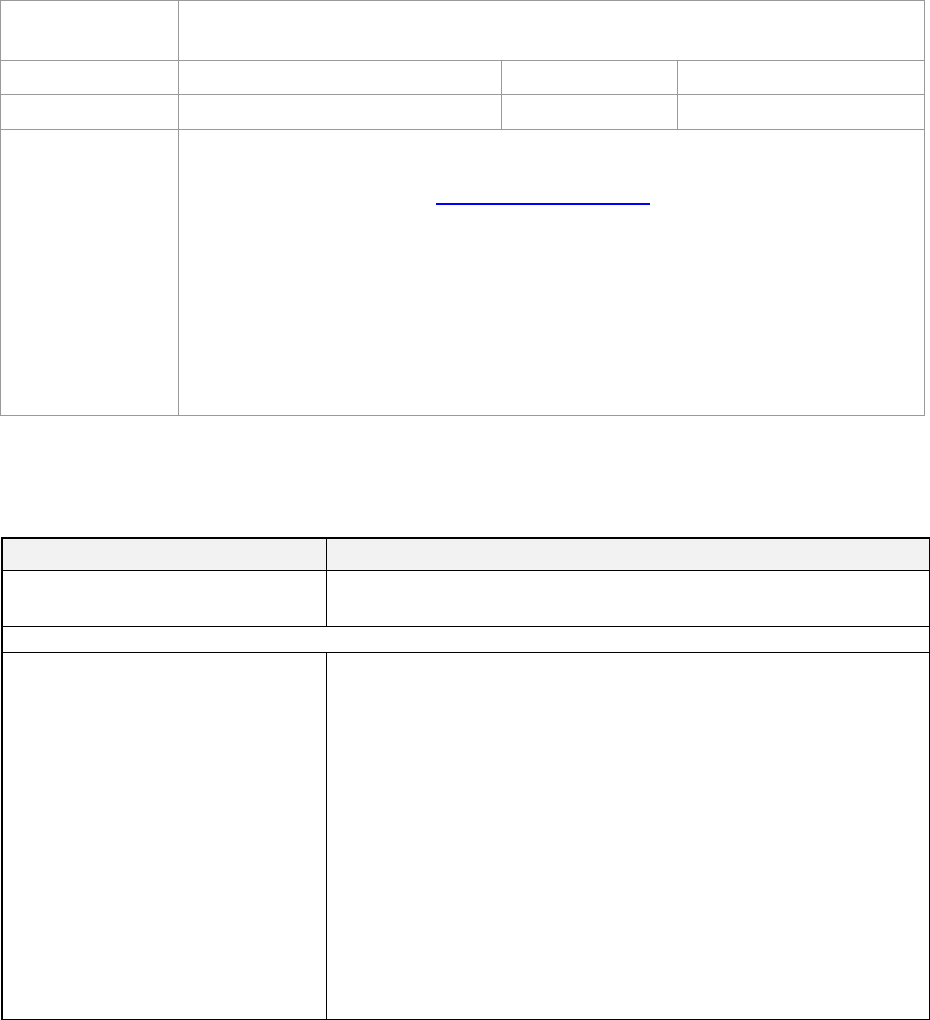
2
Topic:
This document is the reference manual for the installation, configuration
and operation of SAFEmine units and tools.
Document Nr:
PRO_CAS_QC2_130207
Date:
May 23, 2016
Disclaimer
This document and the use of any information contained therein, is
subject to the acceptance of the SAFEmine terms and conditions. They
can be downloaded from www.SAFE-mine.com
SAFEmine makes no warranties based on the accuracy or completeness
of the contents of this document and reserves the right to make changes
to specifications and product descriptions at any time without notice.
SAFEmine reserves all rights to this document and the information
contained herein. Reproduction, use or disclosure to third parties without
express permission is strictly prohibited. Copyright © 2012, SAFEmine.
SAFEmine ® is a registered trademark
Version Control
Version
Modifications
PRO_CAS_QC2_101010
August 29th 2011
Original document
PRO_CAS_QC2_130207
Removed Appendix: Troubleshooting guide.
Created a separate document
Added : the main unit enclosure and the metal
shrouds of all connectors need to be electrically
isolated from the vehicle
Added ‘To assist during installation the ‘Mode’ LED
will turn Red to indicate that the digital output has
gone high’ to Test Station and Boom gate chapters
SMTool manual was removed. A separate
document was added
All features and changes introduced by FW 2.61
were added
Added QC250 specifications (no Wifi configuration)
3
1 SAFEmine device presentation ...................................................... 5
1.1 Objective .................................................................................................................... 5
1.2 Technology ................................................................................................................. 5
1.3 Limitations.................................................................................................................. 5
2 Safety ............................................................................................... 7
2.1 Operating precautions ............................................................................................... 7
2.2 Installation precautions ............................................................................................. 7
3 Hardware .......................................................................................... 9
3.1 Main units ................................................................................................................... 9
3.2 GPS & RF Antenna ..................................................................................................... 9
3.3 Technical specifications and interfaces ..................................................................10
3.4 I/O Connections ........................................................................................................13
4 Installation and operation ............................................................. 16
4.1 General advice ..........................................................................................................16
4.2 Main unit ....................................................................................................................16
4.3 Antennas ...................................................................................................................17
4.4 Antenna cables .........................................................................................................18
5 SAFEmine programming tool (SMTool ) ...................................... 21
5.1 Installation .................................................................................................................21
5.2 Firmware and Configuration File upload .................................................................21
6 Configuration parameter specifications ...................................... 22
6.1 Site specific parameters: ..........................................................................................22
6.2 Vehicle parameters ...................................................................................................22
7 Advanced Troubleshooting .......................................................... 26
7.1 Error codes................................................................................................................26
Appendix A Declaration of conformity.......................................... 27
Appendix B Specifications (QC250) .............................................. 28
Appendix C Additional figures and drawings............................... 29
Appendix D Maintenance Checklist .............................................. 30
Appendix E FCC compliance ......................................................... 31
Appendix F RF radiation ................................................................ 32
Appendix G IC compliance ............................................................ 33
Appendix H Legal statement ......................................................... 34
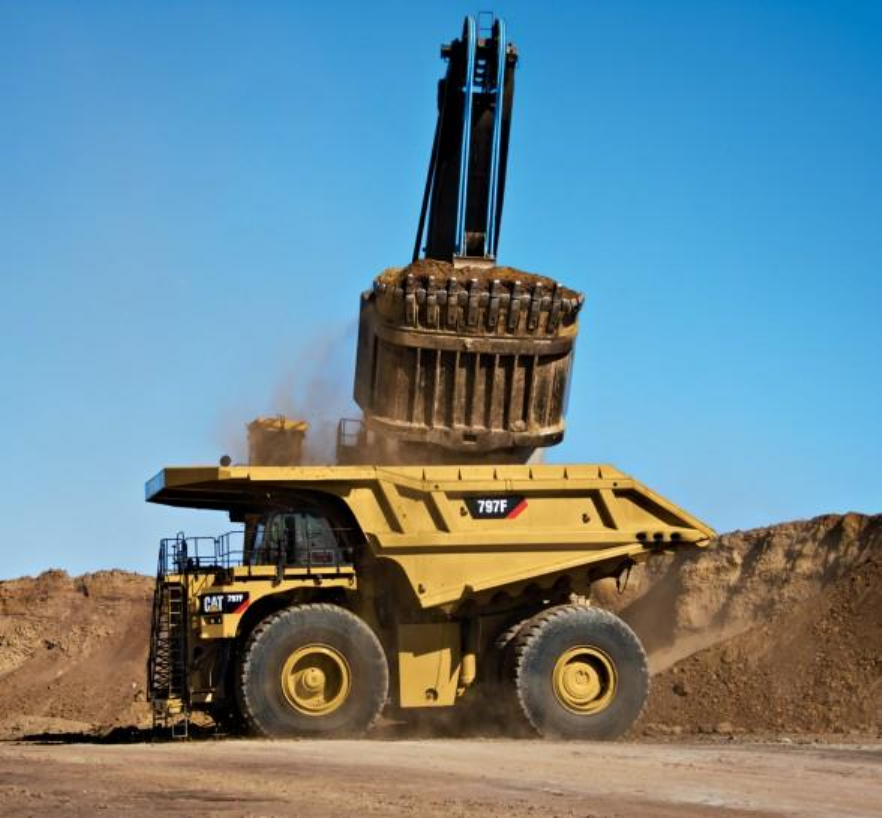
4
SECTION A Introduction

5
1 SAFEmine device presentation
1.1 Objective
The main task for SAFEmine QC250 series products is to support the operator while he
scans the space ahead and around the vehicle with his own eyes, cameras and other aids.
SAFEmine products are simple to use and are designed not to distract the operator from
operating the vehicle.
1.2 Technology
The SAFEmine system – based on technology widely used in aviation – consists of a main
unit, an operator's interface (both output and input) and a dual antenna (one for GPS, one
for radio communication). Depending on the product selected, the operator's interface is
either integrated into the main unit or mounted as a separate display unit. The main unit
contains all main sensors (GPS engine, radio transceiver, micro-controller, memory, data
interfaces and a series of sensors), The operator interface provides both a directional display
of nearby traffic and danger, the beeper/loudspeaker for acoustical warnings and one button
for input.
SAFEmine QC250 series products receive position and movement information from an
internal high-sensitivity 50 channel GPS receiver with an external antenna. Additional
sensors and logic further enhance the accuracy of position measurements. The predicted
driving path of the vehicle, in which a SAFEmine QC250 series product is installed, is
calculated by the main unit and the obtained information is transmitted by radio as a low
power digital burst signal at frequent intervals. Provided they are within receiving range,
these signals are received by other vehicles also equipped with SAFEmine QC250 series
products. The incoming signal is compared with the driving path calculated and predicted for
the second vehicle, taking into account configuration parameters like maximum acceleration
or vehicle dimension. At the same time, SAFEmine QC250 series products optionally
compare the predicted driving path with known static obstacle data, e.g. electric power lines.
If a SAFEmine QC250 series product determines the risk of dangerous proximity to another
vehicle or to an obstacle equipped with a SAFEmine QC250 series product, the unit gives
the operator a warning of the greatest danger at that moment. This warning is given by a
buzzing sound (beep) and bright light emitting diodes (LED). The display also gives
indication of the threat level, plus the horizontal bearing to the threat.
The operating range is very dependent upon the antenna installation in or outside the
vehicle. The normal range is about 500m for line-of-sight operations, but up to 2 km may be
achieved in individual cases.
For their radio communication, SAFEmine QC250 series products use a proprietary patent-
and copyright-protected protocol. Any non-licensed use, dissemination, copying,
implementation or reverse engineering of the SAFEmine QC250 series radio communication
protocol, their hardware and software or parts of it is forbidden by law and will be
prosecuted. SAFEmine is a registered trademark and may not be used without license.
1.3 Limitations
SAFEmine is not designed for use
in deep or narrow open pit mines where availability of GPS satellites is not sufficient
in any other application than open pit mining
on vehicles with excessive vibration
SAFEmine units are only to be used with other SAFEmine units, otherwise inconsistent
function may occur. SAFEmine Ltd. cannot assume any liability from correct or incorrect use
6
of above specified products other than regular warranty according to SAFEmine Ltd. General
Terms and Conditions.

7
2 Safety
2.1 Operating precautions
Operating any type of vehicle inside a mine at any time of the day is an inherently dangerous
activity which is associated with considerable risks for crew, passengers, third parties,
pedestrians, other vehicles and any object in its vicinity. In order to make full and safe use of
SAFEmine QC250 series products, it is absolutely essential to be fully aware of the risks,
operating conditions, restrictions and limitations associated with their use, including to
ensure a proper installation and to perform regular software updates. This includes familiarity
with and strict adherence to the Operating Manual and the Installation Manual.
2.2 Installation precautions
All work done to install the SAFEmine Collision Avoidance System shall be done in
accordance with safe work standards and shall comply with the latest Health, Safety, and
Reclamation Code for mines in the local jurisdiction.
A vehicle equipped with the SAFEmine System must be operated in the same safe
manner as if the SAFEmine System was not installed. The system is not a
substitute for normal safe driving procedures and may never be relied upon.
The SAFEmine System will provide no warning for some hazards, such as
vehicles, obstacles, and other objects not equipped with properly operating
SAFEmine devices.
SAFEmine products are intended as an additional tool in determining potential traffic
threats, supporting an alert and conscientious driver. SAFEmine products are never to
be used in any application where failure of the products could result in personal injury or
material damage. Before using, the latest versions of the respective manuals are to be
consulted for familiarization with product operation and limitations.
SAFEmine makes no warranties with respect to the product. In no event will SAFEmine
Ltd be liable for lost use, profits, revenue, cost of procurement of substitute goods, or
any damages.
SAFEmine products may not be used in the USA and Canada unless the operator or
customer has been authorized to do so in writing by SAFEmine Ltd.
Customers agree to indemnify and hold harmless SAFEmine Ltd., its subsidiaries, and
affiliates, and their respective successors and assigns, from and against all third party
claims, loss, damage or expense, and any other liabilities whatsoever, which may be
incurred by SAFEmine Ltd. with respect to any of the SAFEmine products.
In addition, SAFEmine Ltd.'s current "General Terms and Conditions of Sale" apply.
8
SECTION B Hardware and Installation
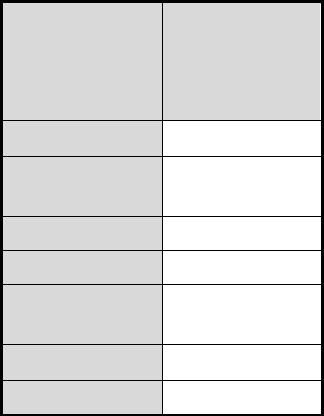
9
3 Hardware
3.1 Main units
Main unit overview 3.1.1
The main unit houses the GPS receiver, radio transceiver, processor, interface logic and
additional sensors. The housing is made of aluminum with plastic end-bezels. All connectors
are on the backside of the unit.
QC250
WiFi
integrated for
AVL / IVMS
CAS
Integrated
display
Digital IO
6
Analog Input
2
GSM
tracking
WiFi tracking
Comment
The QC250 model has an WiFi connector and has no integrated display. The QC250 model
supports Vehicle tracking via WiFi.
In addition to the vehicle’s position, the following status information can be tracked and or
recorded:
Vehicle-ID, Serial number, Firmware version and Build number (sent once after
system reset)
Supply Voltage
Digital inputs (e.g. seatbelt, handbrake, idling)
Analog inputs (e.g. connected to fuel gauge)
The digital IOs of the device can be used to monitor and record vehicle parameters such as:
door open, seatbelt clicked, handbrake set, etc.
Another use of this functionality is the switching of cameras based on movement direction or
surrounding vehicles and obstacles.
Please contact SAFEmine if you plan to use this option.
The QC250 have two analog inputs. They can be used to monitor fuel gauges, tire gauges or
other analog data.
3.2 GPS & RF Antenna
The antenna provided by SAFEmine is a customized GPS and RF combined antenna
especially designed for harsh environments like mines.
The antenna must be professionally installed by trained personnel only and only the
antenna supplied with the equipment by SAFEmine may be used!
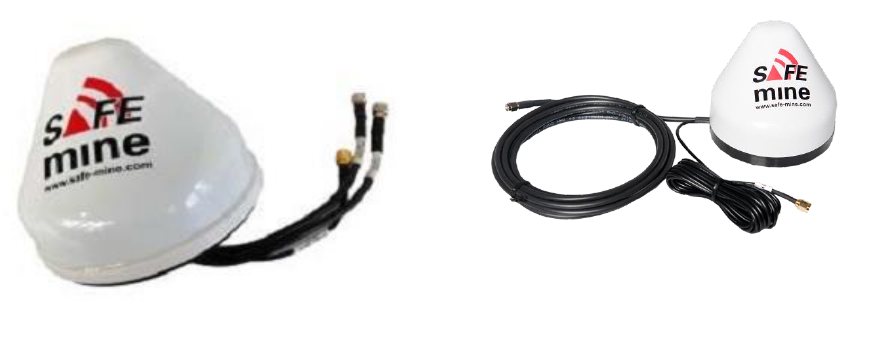
10
Through Hole Mount Antenna (QF036) 3.2.1
The screw mount antenna comes with 10/15cm of cable.
The advantage of using short cables on the antenna and then connecting and running
extension cables is that in case of damage to either the antenna or the cables the defective
part can be replaced separately. Furthermore, testing of the cable and antenna
independently is possible with an SWR meter (Contact SAFEmine for SWR
recommendations). The Through Hole Mount Antenna is ideal for cars with high vibrations
(Haul Trucks) where the antenna and cable must be attached firmly.
Through Hole Mount Antenna (QF036)
Magnetic Mount Antenna (QF037)
Magnetic Mount Antenna (QF037)
3.2.2
The magnetic mount antenna comes with 3.5m of cable for GPS & RF & WIFI. It can be
magnetically attached to any roof top. It allows an easy installation. It is ideal for light
vehicles or other vehicles with little vibration.
3.3 Technical specifications and interfaces
QC250 main unit specifications 3.3.1
See Appendix B : Specifications (QC250)

11
Main unit interfaces and connectors 3.3.2
3.3.2.1 Power / Interface connector (All devices)
The connector is type M12 male, with 8 contacts.
QC250
This interface is connected to the vehicle or add-on modules.
Power / Interface connector (All devices)
QC250
Cable
color
Pin function
Pin type
Pin #
Ground
Power
2
brown
Power (+9 to +28VDC) overvoltage and polarity
protected
Power in
1
white
Digital I/O (IO1 in chapter 3.4 I/O Connections)
Input /
Output
7
blue
Audio (voice) out (may be left NC)
Output
8
red
RS485 (may be left NC) for GPS augmentation input,
Modbus for IO modules
Allows interfacing to a wide range of commercially
available input / output modules, such as switches to
control cameras on haul trucks
Input (RX)
Output (TX)
-
-
grey
pink
RS 232 (data to display and for updates)
Firmware can be updated through this interface.
Input (RX)
Output (TX)
5
6
grey
pink
CAN listener (may be left NC) (typically J1939, ISO
11898)
IO H L
3
4
green
yellow
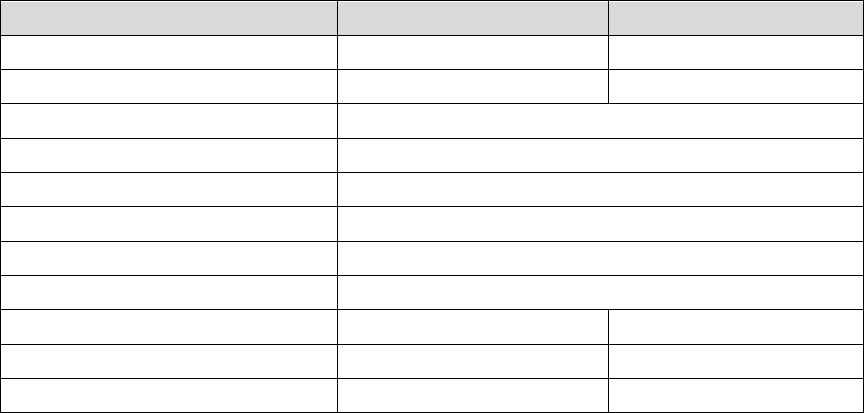
12
3.3.2.2 GPS antenna connector
SAFEmine devices use a 50 channel GPS L1 receiver with SBAS (WAAS, EGNOS)
capability, integrated RAIM (Receiver Autonomous Integrity Monitoring) and active multipath
detection and elimination algorithms. The receiver is GALILEO ready.
The connector is a SMA female for 3.3V active GPS antenna.
Only antennas supplied by SAFEmine may be used.
3.3.2.3 RF antenna connector
SAFEmine devices use an RF transceiver with typically less than 1% Duty Cycle, Peak
Pulse Power below 15 mW (ERP).
The license free ISM / SRD bands are software selectable depending on country of use
Europe, Africa: 868.2 and 868.4 MHz, others
Australia: 921MHz
North America: Frequency hopping around 920MHz
South America: Frequency hopping around 920 to 951MHz
Asia: various
The country of Origin is Switzerland (Harmonized System Customs Code 852610). The
connector for the RF transceiver is a SMA female for 50 Ohm RF antenna
Only antennas supplied by SAFEmine may be used.
3.3.2.4 Wifi antenna connector (QC250)
The QC250 SAFEmine devices include a self-contained WLAN module. The module is a
complete IEE 802.11 b/g/n based wireless device.
The module supports WPA2-PSK, WEP (64 and 128 bit) TKIP security.
The connector is a SMA Reverse Polarity female.
Only antennas supplied by SAFEmine may be used.
GPS/RF Antenna Specifications 3.3.3
Parameter
QF036
QF037
Mounting type
Through Hole
Magnetic
Weight
480g
620g
Dimensions
ø107 x 91 mm
Power Supply
from main unit
Connector
3 * SMA
Operating temperature
-40°C to +85°C
Storage temperature
-40°C to +85°C
Protection rating
IP 67
Cable
3 * 20cm, coaxial
3 * 3.5m, coaxial
WIFI gain
5 dBi
5 dBi
RF gain
3 dBi
3 dBi
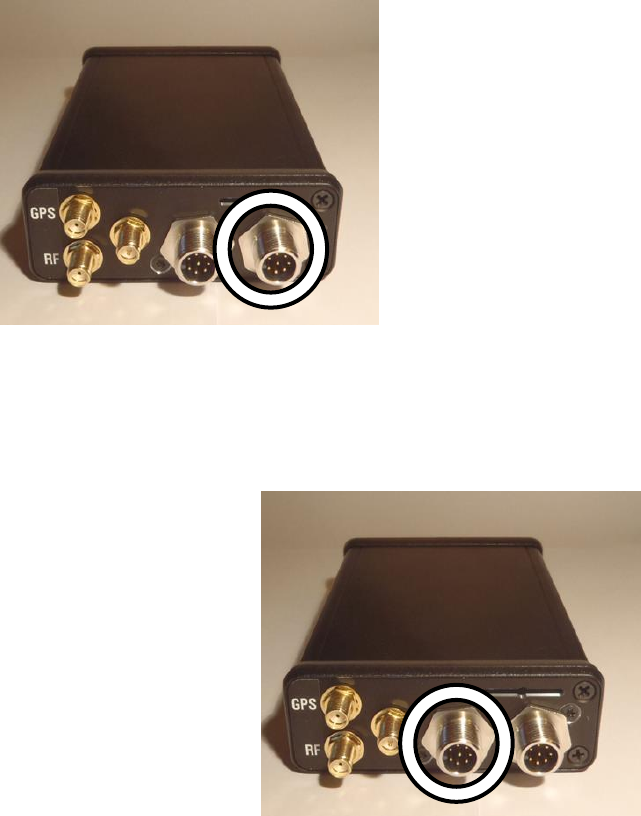
13
3.4 I/O Connections
Hardware capabilities 3.4.1
SAFEmine devices all have extended GPIO (General purpose Input/Output) functionalities.
An IO is available on pin 7 of the Power/Interface connector. It is the blue wire on the Power
Connector (see pictures below).
Power connector on QC250
On the QC250s up to 7 additional IOs can be configured as Input/Output. 7 are available on
the I/O connector (see picture below). The I/O connector is type M12 male, with 8 contacts.
I/O connector on QC250
The I/O connector can be used to monitor vehicle statuses such as seatbelt, emergency
break, and voltages like the fuel gauge.
The following table lists the GPIO capabilities of each device type.

14
Name
Connector
Pin #
IO0
n/a
n/a
IO1
Power
7
IO2
I/O
1
IO3
I/O
2
IO4
I/O
3
IO5
I/O
4
IO6
I/O
5
IO7
I/O
6
IO8
I/O
8
I/O Specifications 3.4.2
3.4.2.1 Digital inputs
A digital input transforms a voltage level into a logical “1” (or “on” state) or “0” (off state).
SAFEmine interprets a voltage of less than 2.2 volts as logical 0,
SAFEmine interprets a voltage of more than 8.7 volts as logical 1.
Each digital input must be configured to incorporate either the 4.7kOhm pull-up or a
pull-down resistor in the SAFEmine device:
Care must be taken to select the correct input configuration, depending on the
characteristics of the vehicle! Wrong settings can influence or even incapacitate the vehicle!
Always ensure that after installation the voltage levels are correct
3.4.2.2 Digital outputs
The digital output is designed to drive modest consumers, such as relays and lamps. Most
units support source and sink driver configuration:
Digital Input / Output
FW configurable as digital input
FW configurable "High Side Switch" or “Low Side Switch”
Maximum continuous load current: 0.4A
Can switch capacitive, inductive and resistive loads
On-state resistance: 350mOhm
Short circuit protected
ESD protection: 5kV
3.4.2.3 Analog Input
15
Input voltage range: 0..24V
Input Resistance: 300k Ohm
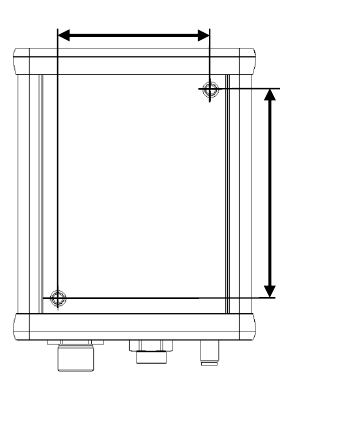
16
4 Installation and operation
4.1 General advice
Unless certified, installation and operation must be on the basis of non-interference with and
no hazard to the existing equipment installed for safe operation. When certified, installation
and operation must be done according to certification procedures in order to comply with
official regulations and requirements.
After installation, an appropriate entry should be made in the vehicle’s technical logs and a
check is to be made that the installation is in no way detrimental to the mechanical or
electrical performance of other vehicle’s systems (e.g. radio). The unit serial number and
software version is to be recorded in the vehicle’s technical log.
SAFEmine highly recommends establishing a “Radio Map”, containing all intentional
transmitters on the mine and their operating frequencies. This map will help to minimize
radio interference.
4.2 Main unit
General recommendations 4.2.1
The main unit must be secured in such a position that:
The operator has the front panel display with the LEDs in
direct view, can hear the acoustic warning tone and can
operate the control button.
The front panel display may not be obstructed at any
time.
It must not impede the operation of the vehicle (incl.
emergency procedures) and in particular it must not
reduce the operator’s field of view.
The connectors at the back of the main unit must
remain accessible to allow the upload of firmware
and maintenance from a PC with an extension cable.
The connectors are tied with a spanner and can’t be
removed by hand.
Power supply 4.2.2
The power supply must be installed such that
The voltage is above 9.6 V at all times. At voltages below 9V the operation of the
SAFEmine unit is no longer guaranteed.
The main unit must be connected directly to battery power to ensure continued
operation in case of vehicle stopping or breakdown
A 2A fuse must be installed near the vehicles battery on both power and ground.
If supply voltage is below 9.6V at startup, a ‘low supply power’ error is displayed and the
device will not power up.
If voltages below 9.6V are observed at any time during operation, the ‘Power’ LED will turn
red. If the voice option is enabled ‘Error Power’ is announced every 30 seconds on the voice
output as long as there is sufficient voltage to do so.
A sealable fuse holder is highly recommended. Furthermore, the fuse should be secured
with a cable tie to make any tampering obvious
51mm
70mm
Main unit bottom view

17
4.3 Antennas
The external combined GPS & RF antenna supplied with the main unit must be connected.
The main unit will not operate without the antennas.
Follow the recommendations regarding antenna cables in chapter ‘4.4 Antenna
cables’
The GPS/RF antennas must be mounted such that:
It is mounted on the highest point of the vehicle, with 360° unobstructed view
of the sky and at least 100cm away from any other transmitting antenna.
The position of the antenna is the same for all the vehicles of the same model. As an
example all the Toyota Hilux Single Cabs must have the antenna at the same
position.
The antennas are connected to the correct inputs.
On tracked type vehicles, the antenna must be mounted as close as possible to
the axis of rotation, unless the two-antenna (SAFEmine devices) setup is used.
On haul trucks it may not be possible to install the antenna at the height of the
bucket. In such a case place the antenna in one of the front corners of the vehicle i.e
not in the center front.
Other information regarding antenna installation
Improper installation of the antenna and its cables is the prominent cause for
malfunction.
The antenna must be professionally installed by trained personal only.
Only antennas supplied by SAFEmine may be attached to the antenna connectors!
Mounting brackets for various vehicles (Haul Trucks etc.) are available from your
local SAFEmine distributor.
Snow and ice buildup reduce the performance of the antenna and must be removed
prior to operation.
Through Hole Mount QF036 4.3.1
The screw mount antenna comes with 10/15cm of cable.
To mount the antenna:
The antenna must be mounted on a horizontal metal surface of diameter 1-2cm
larger than the diameter of the antenna. For smaller vehicles the diameter can be
larger.
A hole must be drilled or punched into the surface. The diameter of the hole must be
at least 22mm (0.866") for the antenna and the compulsory insulating washer.
(Without the washer at least 19mm (3/4"))
The surface should also not be thicker than 12mm (1/2")
In order to secure the antenna mounting it is necessary to have access to the
underside of the hole.
To attach the antenna:
After removing the nut feed the cables through the hole seat the antenna on the
surface
Add the insulating washer
Attach the nut. The nut should be tight (Torque: 5 ft-lb, ~6.8 nm) in order to properly
seal the gasket. Tighten the nut with a wrench.
Finally, feed the cables to the receiver thru additional jumper cables.
The mounting screw of the antenna must be isolated from the vehicle to avoid ground
loops. Suitable insulating washers are available from SAFEmine.
The attached gasket provides a sealant to prevent moisture from entering.
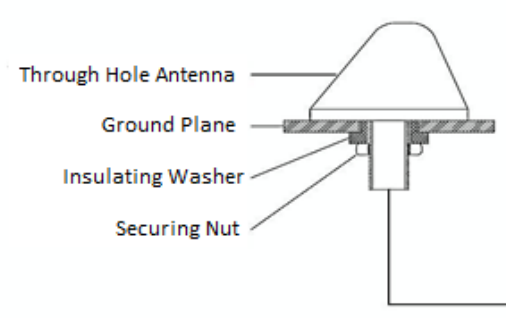
18
Vertical cut of a QF036 after installation
Magnetic Mount QF037 4.3.2
The magnetic mount antenna comes with 3.5m of cables, both GPS & RF. It can be quickly
mounted on vehicles such as light vehicles. For vehicles with a lot of vibration like Haul
Trucks it is recommended to use the through hole mount antenna.
The GPS/RF antenna (QF037) must be mounted such that:
The antenna should not have any electrically conducting surfaces (e.g. metal, carbon
fiber) above or immediately alongside.
If the roof is made out of non-metallic material, a ground plane of minimum 18cm
diameter must be mounted underneath the antenna.
Wifi Antenna (QC250 only) 4.3.3
The Wifi antenna length must not exceed 5 meters. For further information contact
SAFEmine.
4.4 Antenna cables
The choice of antenna cables and installers must be done carefully. SAFEmine recommends
to source cables with SMA connectors already installed:
It is recommended to source cables from a professional local supplier.
Any work on radio RF cabling must be done professionally by trained personnel
according to SAFEmine specifications.
Coaxial low loss cables as well as connectors of proper length and high quality must
be used.
Respect the maximum cable length (see below)
The RF and GPS cables must follow the following rules:
The maximum acceptable attenuation rate for the RF cable is 3dB at 900MHz at 10
meters.
Inner conductor must be solid core
Below is the typical maximum cable length between antenna and main unit per cable type
recommended by SAFEmine.
These values are indications and vary between manufacturers. Please see the datasheet
and send it to SAFEmine prior to the installation.
Use of other coaxial cable types must be approved in writing by SAFEmine!
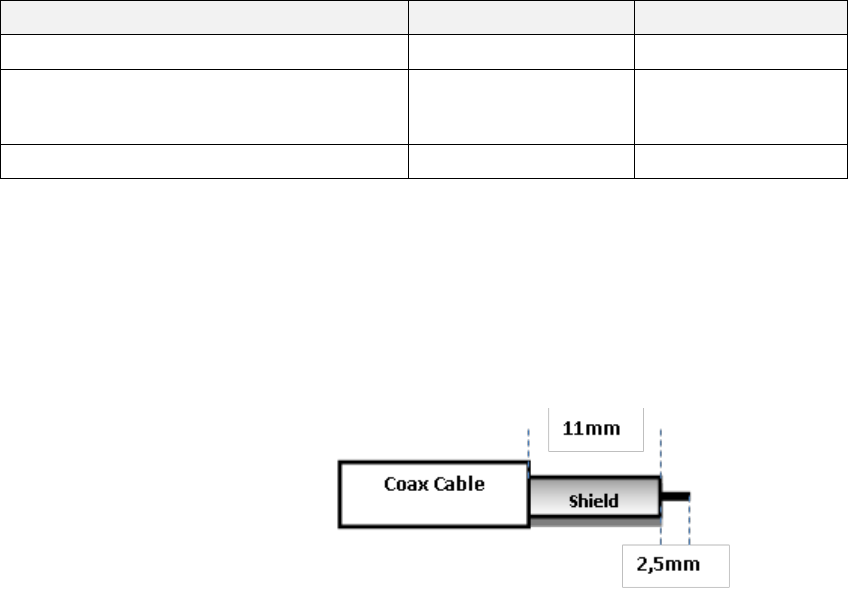
19
Coaxial cable type
Max. length RF
Max. length GPS
RG174 / RG58
Do not use
5m
HDF-195/CFD-195
LMR -195/ RF 195 LMR-200
8m
15m
LMR 400
15m
15m
To calculate the attenuation rate, sum up the attenuation of all segments as specified by the
cable manufacturer. Add 0.3dB for any connection
If the SMA connectors need to be attached, strictly follow the recommendations of the
manufacturer as well as the following rules:
Use 3 blade coax strippers (no knife)
Adjust the coax stripper blades as recommended by the SMA connector
manufacturer. See below for an example :
Always solder the center pin (or crimp when not possible)
Only use appropriate crimping tool
Protect the connection with insulating tape.
Contact SAFEmine with the datasheets of the cables and SMA connectors prior to
installation

20
SECTION C Software and Programming
The SAFEmine devices are controlled by a configurable firmware. The firmware as well as
its configuration will be explained in the following chapters.
Configuration is not only compulsory for the firmware to run but it will also allow the best
usage of the device. The SAFEmine device needs a unique configuration file created and/or
modified by the installer.
Please contact SAFEmine for any question relative to configuration files.
The following chapters will present
The software and its features
How to configure the software and the special features
Vehicles requiring special configurations as well as additional functionalities of the device
are also presented.

21
5 SAFEmine programming tool (SMTool )
5.1 Installation
For the installation and configuration of the Collision Avoidance System firmware the
following is needed:
Hardware:
1) PC or Laptop running Windows 2000 or later.
2) M8 to USB Cable (QL019)
or M8 to serial port cable (QL014) and RS232 to USB converter if PC has no serial
port.
(A QM109 Y cable must be added for QC250)
3) Power Supply or Battery (12 or 24 volts)
Software:
4) SMTool (SAFEmine Software Utility)
5) Microsoft Office
6) Latest Firmware
7) Configuration File generated by a vehicle register
8) USB Driver (if USB port used).
9) Net 3.0 or higher
Notes:
All necessary programs and files referred to above can be obtained on-line through
www.safe-mine.com/support/partners. Enter your user name and password and then
select the corresponding directory. Contact SAFEmine if you don’t have a username
and password.
The SMTool guide (SMTool 2.0User_Manual(PRO_SMT_120601).pdf) is available
upon request or on www.safe-mine.com/support/partners.
5.2 Firmware and Configuration File upload
Both the firmware and configuration file need to be uploaded to the SAFEmine device for the
system to function properly.
Firmware is periodically updated by SAFEmine. Many features and improvements are
available by uploading the latest released version. As a helpful feature, the firmware version
is displayed during start-up. Three green LEDs are lit sequentially for one second, according
to the firmware revision (“2”, “6”, “1”), where “2” is 2 o’clock, and numbers increment
clockwise.
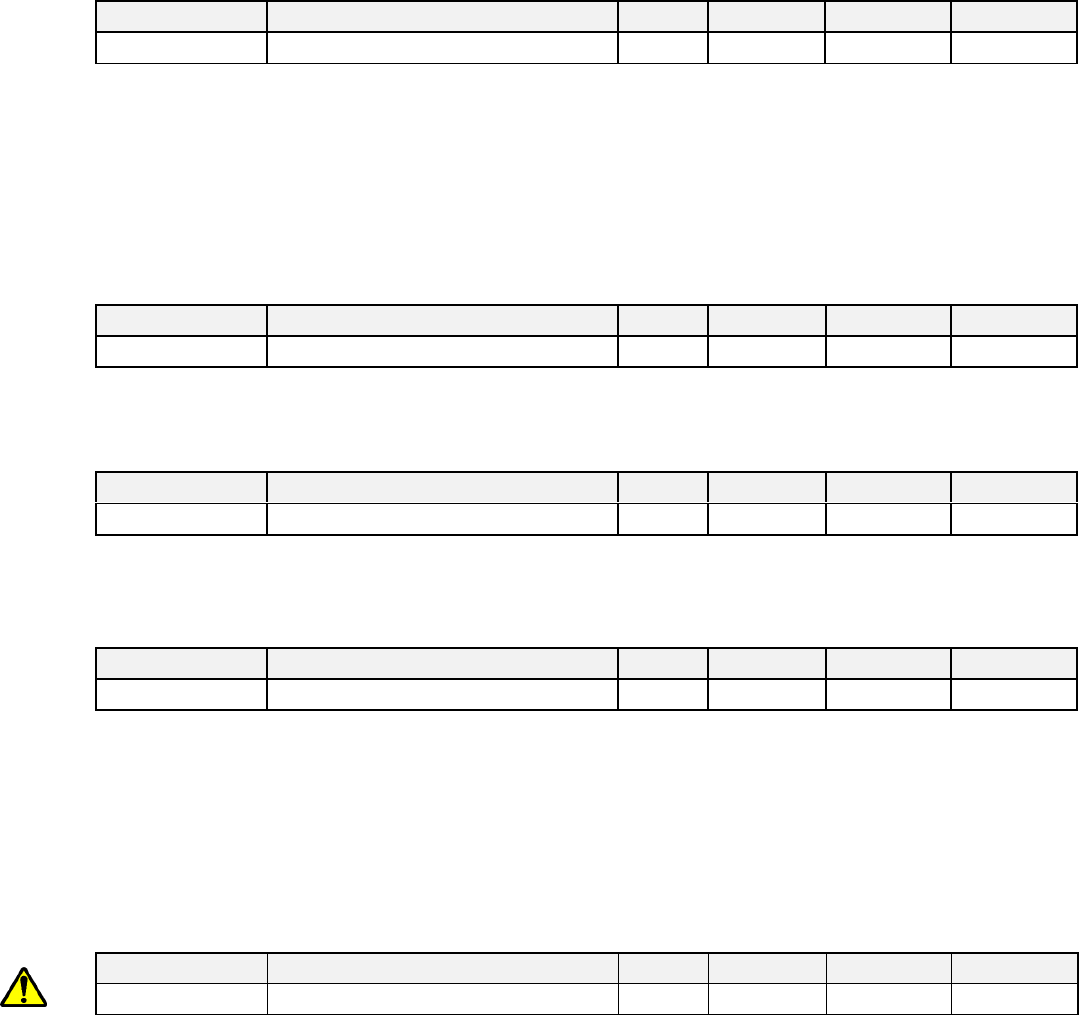
22
6 Configuration parameter specifications
6.1 Site specific parameters:
Site specific parameters must be set on all units
Radio Channel 6.1.1
Keyword
Description
Unit
Range
Default
Example
CHANNEL
RF Radio Channel
-
117 - 381
-
117
Sets the frequency of the radio transmission
117: for Europe / Africa
287: North / South America
301: North America countries under FCC regulation
122: New Zealand
381: Australia
357: Israel
Channel Hopping 6.1.2
Keyword
Description
Unit
Range
Default
Example
HOPPING
Number of channels to use for hopping
-
1 - 50
1
1
50: North America countries under FCC regulation
1: All other areas
Transmit Power 6.1.3
Keyword
Description
Unit
Range
Default
Example
RFPOWER
Transmit Power Setting.
-
0 - 3
3
3
Sets the transmit power of the radio. A setting of 3 results in maximum power and range of the radio
2: North America countries under FCC regulation (lower power setting required to comply with FCC)
3: All other areas
Keyword
Description
Unit
Range
Default
Example
WIFIPOWER
Transmit Power Setting.
-
0 - 2
2
2
Sets the transmit power of the wifi. A setting of 2 results in maximum power and range of the wifi
0: North America countries under FCC regulation (lower power setting required to comply with FCC)
2: All other areas
6.2 Vehicle parameters
Required vehicle parameters 6.2.1
Vehicle ID
Parameter
Description
Unit
Range
Default
Example
VEHID
Vehicle ID, e.g. mine plant number
-
max 6 char
-
LV007
Must be unique within the site
Vehicle Type

23
Parameter
Description
Unit
Range
Default
Example
VEHTYPE
Vehicle Type
-
10 - 100
-
31
Vehicle Dimensions
Parameter
Description
Unit
Range
Default
Example
VEHLENGTH
Vehicle length, overall
meter
0 - 655
10
12.8
VEHWIDTH
Vehicle width, overall
meter
0 - 655
4
3.4
VEHHEIGHT
Vehicle height, overall
meter
0 - 50
3
2.34
Description
VEHTYPE value
Examples/ Remarks
Light Vehicle
10
Ford F150,F250
Small Tractor
11
Haul Truck
21
Komatsu 730E,
Dump Truck
22
Caterpillar 789C
Water Tanker
23
CAT 777
ADT (Articulated Dump Truck)
31
Volvo A25E
Fuel Bowser
32
Service Truck
33
Mitsubushi Canter; Volvo Fm12
Mobile Crane
34
Franna AT 20
Low Bed Truck
35
Rear Tip Truck
36
Excavator
41
CAT 385C
Shovel
42
Liebherr 3994, Bucyrus 495HR2
PC
43
Komatsu PC 4000
Dozer
44
Cat D9T
Dragline
45
Drill
46
Atlas Copco PV271
Large Front End Loader
51
Le Tourneau L1850
Small Front End Loader
52
CAT 988H
Tyre Handler
53
Cable Handler
54
Grader
55
Cat 24H , Cart 16M
TLB, JCB
56
John Deere 110 TLB, (Back Hoe)
Large Tractor
57
CAT 992C
Train
61
Stockpile Stacker
71
Test Station
72
Stockpile Dozer
73
Lighting Plant
74
Alight 22KVa , Multiflo ??
Stockpile Reclaimer
75
Boomgate
76
Beacon
100

24
Highly recommended vehicle parameters 6.2.2
Vehicle Weight
Parameter
Description
Unit
Range
Default
Example
VEHWEIGHT
Maximum vehicle weight (with no load)
Ton
0 -1500
50
430
LED notification distances
Parameter
Description
Unit
Range
Default
Example
DISTFAR
Green LED indicates vehicle closer
than distfar meters
meter
0 - 500
150
180
DISTNEAR
Steady Red LED indicates vehicle
closer than disnear meters
meter
0 - 250
40
40
DISTCLOSE
Flashing Red LED indicates vehicle
closer than disclose meters
meter
0 - 250
5
5
For best situation awareness it is recommended to keep the DISTFAR value larger than the
maximum breaking distance of any vehicle in the mine, typically about 110m.
Additional safety distances
Parameter
Description
Unit
Range
Default
Example
SAFETYLENGTH
Extends the alarm region in percent of
vehicle length.
% of
length
0 - 100
10
20
SAFETYWIDTH
Extends the alarm region in percent of
vehicle width.
% of
width
1 - 100
10
0
Example: A vehicle with length 5m sets SAFETYLENGTH = 30 thus will have an additional
safety area of 1.5m ahead AND behind the vehicle.
Optional vehicle parameters 6.2.3
Parameter
Description
Unit
Range
Default
Example
VEHMANU
Vehicle Manufacturer
-
max. 31
characters
-
KOMATSU
VEHMOD
Manufacturers model name
-
max. 31
characters
-
785
Parameter
Description
Unit
Default
Example
MINTURNRAD
This value must be set to 1.
Meter
1
1
DRIVERAFT
Distance between front of vehicle and driver
Meter
1.5
DRIVERRIGHT
Distance between left side of vehicle and driver
Meter
1.5
DRIVERUP
Elevation of driver above ground
Meter
4
MAXSPEED
Maximum speed before alert.
Km/h
0 (disabled)
70
25
SECTION D Software maintenance

26
7 Advanced Troubleshooting
A complete troubleshooting guide (Troubleshooting_Guide(PRO_CAS_QC2_111025).pdf) is
available upon request.
7.1 Error codes
The unit performs a self-test upon power up. Errors are indicated by all 4 status LEDs (left
side of the display) glowing red, while the circular display shows the error code(s). More
detailed error messages are sent to the serial port.
Debugging of error codes is best done with a PC running a terminal program (e.g. HTerm)
connected to the serial port.
On first restart after updating a "non-fatal" error may be displayed for 30 seconds due to the
additional configuration options (green flashing status lights and one green light on the
compass display). Troubleshooting guide explains how to react to an error code.
Error
code
LED #
Subsystem
Severity
Cause/Comment
01
1
Flash Memory
(Fatal)
Flash memory failure; non-fatal if operational, but data
lost. Fatal if operation is not possible.
02
2
Serial
Fatal
Serial number invalid, contact support
03
2&1
Dataport error
Alert
Sending of Dataport Heartbeat message failed.
04
3
GPS receiver
Fatal
Unable to communicate with or configure GPS module
05
1 & 3
GPS Antenna
Fatal
GPS antenna defective or bad connection
08
4
Power
Fatal
Power supply defective or low/high voltage
16
5
User Interface
Fatal
No user interface connected.
32
6
Config
(Fatal)
Configuration file contains errors, or is not present.
64
7
Firmware
Fatal
Firmware corrupt, upload new firmware
128
8
Generic
Various
Generic error, currently not used
256
9
GPIO error
Fatal
GPIO configuration or hardware problem. See Terminal
output for details.
4095
All
Unknown
Various
Not used.

27
SAFEmine Ltd., CH-6340 Baar, Switzerland, declares that in typical configuration the Hardware
Version 1 meets the requirements of the CE Mark.
The radio conforms with the requirements of EN 300 220-3:2000 (Power Class 9). The EMC
conforms with EN 301 489-3:2002-08 for a Class 3 SRD Device (equipment type I). It is a Class 1
item of radio equipment as defined by R&TTE Directive. The necessary tests and certification were
undertaken by TRAC-KTL, Unit E, South Orbital Trading Park, Hedon Road, Hull, HU9 1NJ, UK.
These documents may be inspected at the premises of SAFEmine Ltd. by arrangement through:
info@safe-mine.com
Schwyz, September 2008
Appendix A Declaration of conformity

28
Parameter
Conditions1
Dimensions
excl.
connectors
81 x 30 x 126 mm3 (3.2 x 1.2 x 5.0 in3)
Weight
excl cables
260 g (0.57lb)
Power Supply
Nominal
12 to 28 VDC
Power Consumption (@ 12 V)
typical
< 80 mA
Max peak
< 150 mA
Max standby
< 40 mA
Input/Output
Digital
3x, configurable
Input
Digital
2x, low < 2.2V, high > 8.7V
Input
Analog
2x, 0 to 24V
GPS
50 channel GPS L1, ISO/TS 16949
qualified, GALILEO ready
WiFi
Network
standard
IEEE 802.11 b/g/n
Frequency
band
2.412 GHz – 2.484 GHz
Security
802.11i (AES, TKIP, WPA, WPA 2)
Typ. Transmit
power
10 dBm (Europe)
7 dBm (North America)
Sensitivity
-97dBm @ 1 Mbps to -71 dBm @ 65
Mbps
Data rates
802.11n: 65 Mbps; OFDM:
6,9,12,18,24,36,48,54 Mbps
Traffic alert range
Typical
500m (1/3 mile)
Refresh Rate
Typical
4 Hz
Traffic alert range
Typical
500m
Operating temperature
-40°C to +60°C2
Humidity
95%, non condensing
Protection rating
IEC 60529
IP54
1
All specification are at an ambient temperature of 25°C.
2 SAFEmine devices are designed to run at 85°C. For operator safety reasons the device must not be
run at temperatures above 60°C
Appendix B Specifications (QC250)
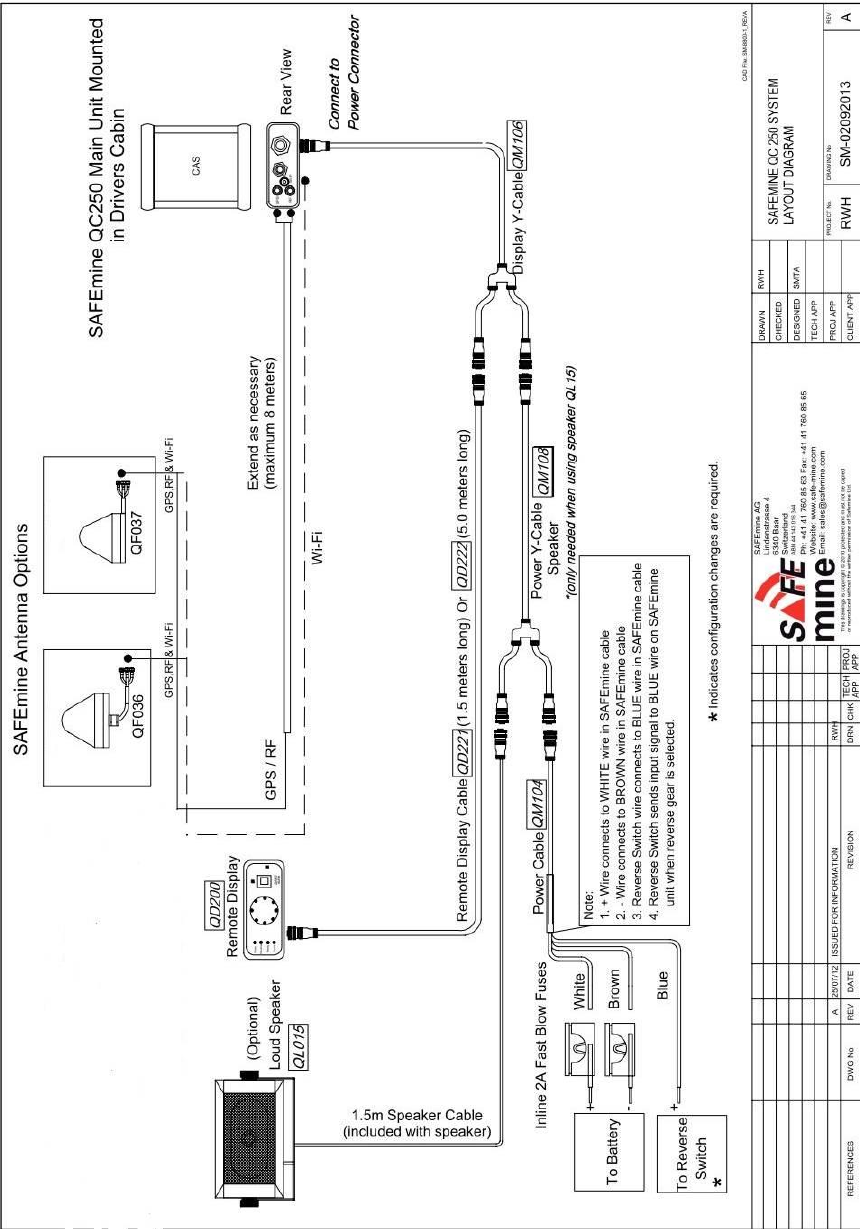
29
Typical installation
Appendix C Additional figures and drawings
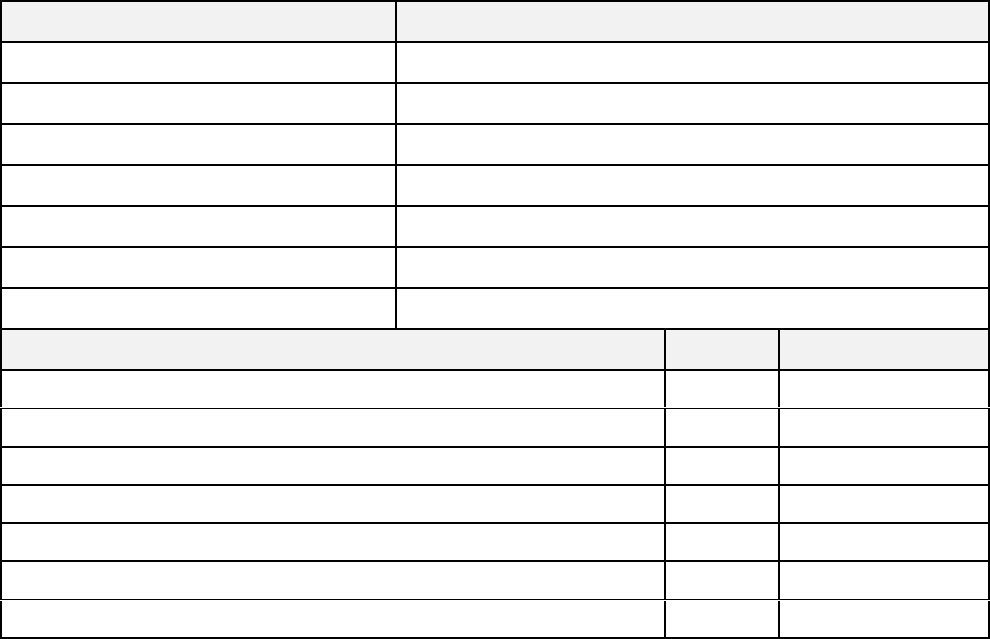
30
To be performed before vehicle is released
Item
Date checked
Responsible
Configuration technician
SAFEmine serial number
Firmware version loaded
Configuration file loaded
Vehicle Plant number
Initial
Comment
Check cables, abrasion, UV damage
Visual inspection of housing for damage
Firmware updated to latest version
Buzzer (speaker if installed) unobstructed and working
Ready LED green after <3 minutes (if vehicle is outside)
Press button (> 5 seconds) for reset -> light, beep, self test
Driven by test station
Appendix D Maintenance Checklist
31
This device complies with Part 15 of the FCC Rules. Operation is subject to the following two
conditions: (1) this device may not cause harmful interference, and (2) this device must
accept any interference received, including interference that may cause undesired operation.
Per FCC Rules, changes or modifications not expressly approved by SAFEmine could void
your authority to operate this equipment.
NOTE: This equipment has been tested and found to comply with the limits for a Class B
digital device, pursuant to part 15 of the FCC Rules. These limits are designed to provide
reasonable protection against harmful interference in a residential installation. This
equipment generates, uses and can radiate radio frequency energy and, if not installed and
used in accordance with the instructions, may cause harmful interference to radio
communications. However, there is no guarantee that interference will not occur in a
particular installation. If this equipment does cause harmful interference to radio or television
reception, which can be determined by turning the equipment off and on, the user is
encouraged to try to correct the interference by one or more of the following measures:
—Reorient or relocate the receiving antenna.
—Increase the separation between the equipment and receiver.
—Connect the equipment into an outlet on a circuit different from that to which the receiver is
connected.
—Consult the dealer or an experienced radio/TV technician for help.
Appendix E FCC compliance
32
RF Radiation Hazard Warning
To ensure compliance with FCC and Industry Canada RF exposure requirements, this
device must be installed in a location where the antennas of the device will have a minimum
distance of at least 20 cm from all persons. Using higher gain antennas and types of
antennas not certified for use with this product is not allowed. The device shall not be co-
located with another transmitter.
Installez l'appareil en veillant à conserver une distance d'au moins 20 cm entre les éléments
rayonnants et les personnes. Cet avertissement de sécurité est conforme aux limites
d'exposition définies par la norme CNR-102 at relative aux fréquences radio.
Appendix F RF radiation

33
Industry Canada Notice and Marking
This radio transmitter 9849A-QC250B has been approved by Industry Canada to operate
with the antenna types listed below with the maximum permissible gain and required
antenna impedance for each antenna type indicated. Antenna types not included in this list,
having a gain greater than the maximum gain indicated for that type, are strictly prohibited
for use with this device.
Le présent émetteur radio a été approuvé par Industrie Canada pour fonctionner avec les
types d'antenne énumérés ci-dessous et ayant un gain admissible maximal et l'impédance
requise pour chaque type d'antenne. Les types d'antenne non inclus dans cette liste, ou dont
le gain est supérieur au gain maximal indiqué, sont strictement interdits pour l'exploitation de
l'émetteur.
Antennatype
QF036
QF037
Mounting type
Through Hole
Magnetic
Weight
480g
620g
Impedance
50 Ohm Nominal
WIFI gain
5 dBi
RF gain
3 dBi
GPS gain
5 dBi
Under Industry Canada regulations, this radio transmitter may only operate using an antenna
of a type and maximum (or lesser) gain approved for the transmitter by Industry Canada. To
reduce potential radio interference to other users, the antenna type and its gain should be so
chosen that the equivalent isotropically radiated power (e.i.r.p.) is not more than that
necessary for successful communication.
Conformément à la réglementation d'Industrie Canada, le présent émetteur radio peut
fonctionner avec une antenne d'un type et d'un gain maximal (ou inférieur) approuvé pour
l'émetteur par Industrie Canada. Dans le but de réduire les risques de brouillage
radioélectrique à l'intention des autres utilisateurs, il faut choisir le type d'antenne et son gain
de sorte que la puissance isotrope rayonnée équivalente (p.i.r.e.) ne dépasse pas l'intensité
nécessaire à l'établissement d'une communication satisfaisante.
This device complies with Industry Canada licence-exempt RSS standard(s). Operation is
subject to the following two conditions: (1) this device may not cause interference, and (2)
this device must accept any interference, including interference that may cause undesired
operation of the device.
Le présent appareil est conforme aux CNR d'Industrie Canada applicables aux appareils
radio exempts de licence. L'exploitation est autorisée aux deux conditions suivantes : (1)
l'appareil ne doit pas produire de brouillage, et (2) l'utilisateur de l'appareil doit accepter tout
brouillage radioélectrique subi, même si le brouillage est susceptible d'en compromettre le
fonctionnement.
Appendix G IC compliance
34
WARNING OF PERSONAL INJURY
As with all traffic awareness and collision avoidance devices, SAFEmine products may not
detect all threats within the detection window. SAFEmine products are intended as an
additional tool in determining potential traffic threats, supporting an alert and conscientious
driver. SAFEmine products are not designed as a substitute for proper safe driving and
visual traffic scanning procedures; a vigilant effective lookout is required at all times.
SAFEmine products only warn the operator of the presence of other vehicles that are also
fitted with SAFEmine products or warn of obstacles that are stored in the internal
database. SAFEmine products do not give any guidance on avoiding action. The operator
of the vehicle remains fully responsible for operating the vehicle and ensuring the safety of
passengers, pedestrians and other traffic. Never use SAFEmine products for applications
other than their intended and authorized use. Never use SAFEmine products as
emergency stop device or in any other application where failure of the products could
result in personal injury. Before installing, handling, using or servicing SAFEmine products,
consult the data sheet, manuals and application notes and make yourself thoroughly
familiar with the operations and limitations. Failure to comply with these instructions could
result in serious injury or death.
LIMITED WARRANTY
EXCEPT FOR THE WARRANTIES EXPRESSLY SET FORTH HEREIN, SAFEMINE
MAKES NO WARRANTIES, EITHER EXPRESS OR IMPLIED, WITH RESPECT TO THE
PRODUCT. ANY AND ALL WARRANTIES, INCLUDING WITHOUT LIMITATION,
WARRANTIES OF MERCHANTABILITY OR FITNESS FOR A PARTICULAR PURPOSE,
ARE EXPRESSLY EXCLUDED AND DECLINED. SAFEMINE is only liable for defects of
this product arising under the conditions of operation provided for in the data sheet and
proper use of the goods. SAFEMINE explicitly disclaims all warranties, express or implied,
for any period during which the goods are operated or stored not in accordance with the
data sheet. The warranty voids in the case of the following cases: any opening of the
housing, inappropriate operations or installation (see the restrictions in the respective
manuals) and intellectual property violations.
SAFEmine Ltd.’s entire liability and customer’s exclusive remedy for SAFEmine products
that fail to conform to SAFEmine Ltd.’s limited warranty, shall be, at SAFEmine Ltd.’s sole
option, either repair or replacement of the nonconforming products, or, if neither is
practicable, a refund of the fees paid by customer to SAFEmine Ltd. for such products. The
warranty for the repaired or replaced product is limited to the scope and remaining duration
of the original warranty for the nonconforming product.
LIMITED LIABILITY
SAFEmine Ltd. does not accept any liability arising out of any application or use of any
product or circuit and specifically disclaims any and all liability, including without limitation
consequential or incidental damages. All operating parameters, including without limitation
recommended parameters, must be validated for each customer’s applications by
customer’s technical experts. Recommended parameters can and do vary in different
applications. SAFEMINE LTD.’S LIABILITY TO CUSTOMER ARISING OUT OF OR
RELATING TO ANY SAFEMINE PRODUCTS SHALL NOT EXCEED THE AGGREGATE
AMOUNTS PAID BY CUSTOMER TO SAFEMINE FOR SUCH SAFEMINE PRODUCTS. IN
NO EVENT WILL SAFEMINE LTD. BE LIABLE FOR LOST USE, PROFITS, REVENUE,
COST OF PROCUREMENT OF SUBSTITUTE GOODS, OR ANY OTHER SPECIAL,
INDIRECT, RELIANCE, INCIDENTAL, OR CONSEQUENTIAL DAMAGES, HOWEVER
CAUSED AND UNDER ANY THEORY OF LIABILITY RELATING HERETO. Radio band
frequency allocation and licensing conditions may vary from country to country. The
operator is solely responsible for ensuring that SAFEmine products are operated in
Appendix H Legal statement
35
conformity with the applicable telecommunication laws.
If the customers uses SAFEmine products for any unintended or unauthorized application,
the customer shall defend, indemnify and hold harmless SAFEmine Ltd. and its officers,
employees, subsidiaries, affiliates and distributors against all claims, costs, damages and
expenses, and reasonable attorney fees arising out of, directly or indirectly, any claim of
personal injury or death associated with such unintended or unauthorized use, even if
SAFEmine Ltd. shall be allegedly negligent with respect to the design or the manufacture of
the product.
INDEMNIFICATION
Customers agree to indemnify and hold harmless SAFEmine Ltd., its subsidiaries, and
affiliates, and their respective successors and assigns, from and against all third party
claims, loss, damage or expense, and any other liabilities whatsoever, including without
limitation, reasonable counsel fees, arising from or by reason of any actual or claimed
damages, and/or injuries, or any litigation based thereon, which may be incurred by
SAFEmine Ltd. with respect to any of the SAFEmine products covered by the order,
including use, and such obligation shall survive acceptance of the SAFEmine products and
payment therefore by the customer.
INFRINGEMENT
SAFEmine Ltd. does not warrant that products and its use will not infringe any patent,
copyright or trademark. No specification shall constitute a warranty, express or implied,
against any claims for infringement of patents, copyrights or trademarks. Customer shall
indemnify and hold SAFEmine Ltd., its subsidiaries and affiliates, and their respective
successors and assigns, and its customers harmless from any and all third party liability for
such infringement, including without limitation damages, costs, expenses (including
reasonable counsel fees), and lost profits arising from any claim that the use of any goods
supplied under the invoice infringe any patent, copyright or trademark rights.